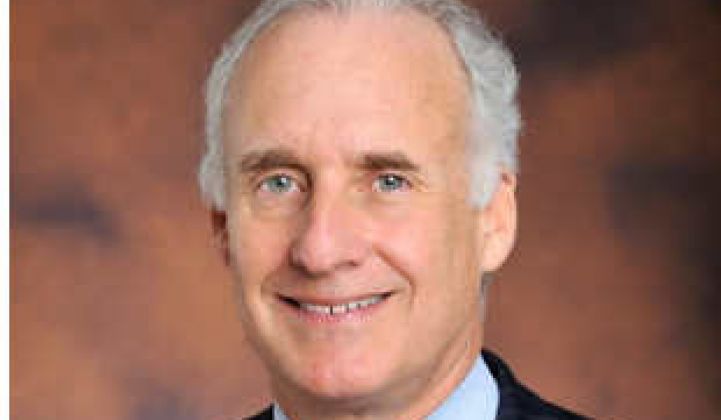Richard Kauffman has only been on the job for eleven days, so he has to be careful about what he says in a room full of people.
“I’m not talking about fracking and I’m not talking about what’s going to happen to LIPA,” Kauffman, the new chairman of energy policy and finance, announced as he kicked off the keynote at the Agrion Energy & Sustainability Summit in New York City.
Although he spoke in generalities, Kauffman gave some hints of what he might tackle as New York’s first Energy Czar.
Kauffman talked about the challenges of the utility industry at large, with high capital costs and the fact that, in at least a dozen states, it’s cheaper for large commercial customers to use combined heat and power (CHP) than to pay their utility. The problem is a building “Aunt Millie” effect, where fewer people are absorbing the cost of the entire network.
“Some people in the utility industry have called it 'circling the drain',” said Kauffman, who was senior advisor to U.S. Department of Energy secretary Steven Chu before coming to New York. He noted that as the cost of CHP and fuel cells come down as solar PV has, the Aunt Millie effect will only become more extreme.
To find solutions for a changing energy landscape, he said that states (without specifying whether this would happen in New York) would have to look beyond decoupling and rate design tweaks. “Are we putting utilities and customers in a position where we’re paying for two systems?” he asked. “We need to get ahead of the trend and think about this more deeply.”
Without talking specifically about New York, Kauffman also spoke in detail about green banks. It is hard not to extrapolate what his comments might mean for New York’s new $1 billion green bank, which Governor Andrew Cuomo announced in his State of the State address, when he also announced Kauffman’s new role in his government.
Kauffman identified three market obstacles that he felt any green bank needed to address:
- Regulatory rules facing banks and insurance companies make it tough for small projects to get financing, whereas a government entity doesn’t face the same capital constraint.
- Energy is an operating expense for companies. Because of constraints in financing, too many energy solutions require outlay of capital instead of being paid over time. He noted some changing financing options, like solar leases, which turn those capital investments into operating expenditures.
- Very few capital market solutions are available for smaller projects in clean energy.
He went on to offer five operating principles that should govern any green bank:
1. Green banks should work where they can mobilize private capital.
2. Banks should find intermediaries in the market.
3. Activities of a green bank should facilitate development of capital markets.
4. Working to leverage private capital means that green banks can work in wholesale markets and not in retail. It should not compete with the private sector.
5. Unless the bank has the capacity to earn a meaningful surplus, it should not provide loans to manufacturing. (He then noted he was not at the DOE when the Solyndra loan was approved.)
Ultimately, Kauffman sees green banks focusing more on “generation-type” projects, rather than manufacturing projects of emerging technologies. He used CHP as an example. “Using proven technology that’s small with respect to what’s innovative,” he said, “green banks could provide a guarantee to help a new technology become bankable.”



